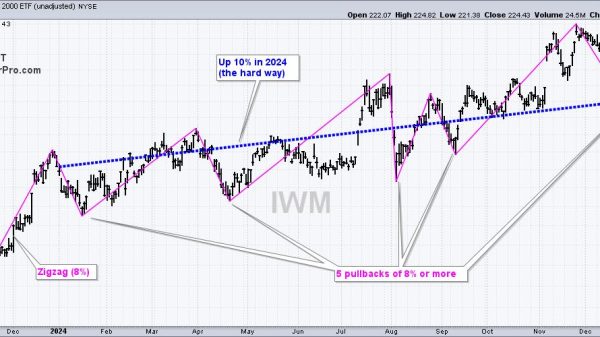Romina Boccia and Ivane Nachkebia
This Thursday, Cato is hosting the Social Security Symposium: A Global Perspective from 8:45 a.m. to 2:30 p.m. (EST). You can join us in person at the Cato headquarters in Washington DC (breakfast and lunch will be served) or tune in online. We hope to see you there!
Social Security, the largest federal government program, is unsustainable as currently structured. Social Security consists of Old Age and Survivors Insurance (OASI) and Disability Insurance (DI). Unless stated otherwise, Social Security will refer to OASI in this document. This fact sheet lays out key fiscal details legislators and the public should know about Social Security to help them examine the unsustainability of this massive federal entitlement program.
Social Security is the single largest federal government program, spending $1.2 trillion in 2023 or 4.5 percent of gross domestic product (GDP).
Social Security spending will nearly double and reach $2.1 trillion or 5.2 percent of GDP by 2033. By then, the government will spend more on Social Security annually than on the entire defense and nondefense discretionary budget.
For the first time in the program’s history, the number of beneficiaries will exceed 60 million by 2025.
The average monthly benefit for an individual was $1,760 in 2023.
The maximum monthly benefit for an individual is $4,873.
Because initial benefit levels are indexed to wage growth, Social Security benefits are growing much faster than inflation. A maximum‐benefit‐eligible beneficiary retiring in 2045 would receive over $23,000 more in annual benefits that year, after adjusting for inflation, than a comparable worker who retired in 2020.
Since the program’s inception, life expectancy at birth has increased by nearly 16 years. Yet, Social Security’s eligibility age has only increased by 2 years.
The ratio of covered workers to Social Security beneficiaries has declined from 41.9 in 1945 to 3.1 in 2024, putting substantial strain on the program’s pay‐as‐you‐go system due to fewer workers funding retirees’ benefits.
Social Security has been contributing to federal deficits and grappling with increasing budget shortfalls.
Social Security is projected to run a $184 billion deficit in 2024. By 2033, the deficit is expected to more than double, reaching $402 billion (see Figure 1).
Social Security’s trust fund is a liability, not an asset. Social Security holds no real assets beyond IOUs against future US taxpayers. Those IOUs, which amount to $2.6 trillion as of 2024, are part of the $34.6 trillion gross national debt.
When the Social Security trust fund ledger depletes by 2033, all beneficiaries, regardless of age, income, or need, will face a 21 percent benefit cut.
Social Security’s 75‐year unfunded obligation (combined OASI and DI)—the difference between the present value of payroll tax revenues and spending — is $25.2 trillion, comparable in size to nearly the entire publicly held debt of $27.5 trillion in 2024. Together with Medicare, Social Security’s OASI and DI programs are responsible for 100 percent of US unfunded obligations.
To address the 75‐year Social Security funding shortfall, Congress would have to increase the payroll tax rate from 12.4 percent to 17.5 percent. As a result, median earners ($48,000/year) would see their payroll taxes rise by $2,450 annually.
Security reform options:
Adopt a more accurate inflation adjustment: Congress should update the index used to calculate cost‐of‐living adjustments for current Social Security benefits from the CPI‑W to the chained consumer price index. The chained CPI more accurately reflects changes in consumer behavior in response to price changes and is estimated to reduce Social Security’s 75‐year funding gap by one‐fifth.
Index Initial Benefits to Prices: Social Security benefits are growing much faster than inflation because initial benefits are indexed to wage growth. Switching to a benefit formula that adjusts workers’ initial benefits for inflation, rather than the growth in average wages, would close 80 percent of the program’s 75‐year funding gap while preserving the purchasing power of seniors.
Increase the Social Security Eligibility Age: Congress should raise the early and full Social Security eligibility ages by 3 years each (to 65 and 70) and index both to increases in longevity. Raising the full retirement age to 70 would reduce deficits by $121 billion between 2024 and 2032.
Transition from an Earnings‐related Scheme to Flat Benefits: Social Security uses a costly earnings‐related structure instead of a poverty‐prevention, flat benefit system, as is common in many other countries. Depending on the level at which a flat benefit is set, such a regime can save taxpayers’ money by providing antipoverty protection in old age at a lower cost than an earnings‐related regime does.
Uncapping the Payroll Tax Won’t Save Social Security: Eliminating the Social Security tax cap (thus taxing all earned income) would only close half of the program’s long‐term funding shortfall. If the tax cap were eliminated in 2024, Social Security would return to running deficits by 2029, merely five years later.
























